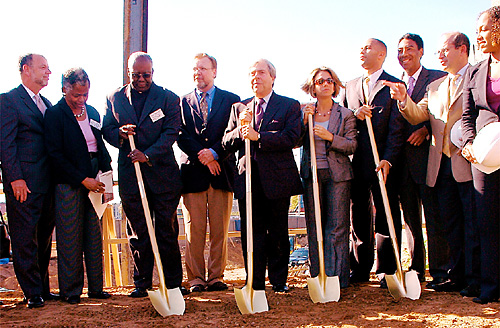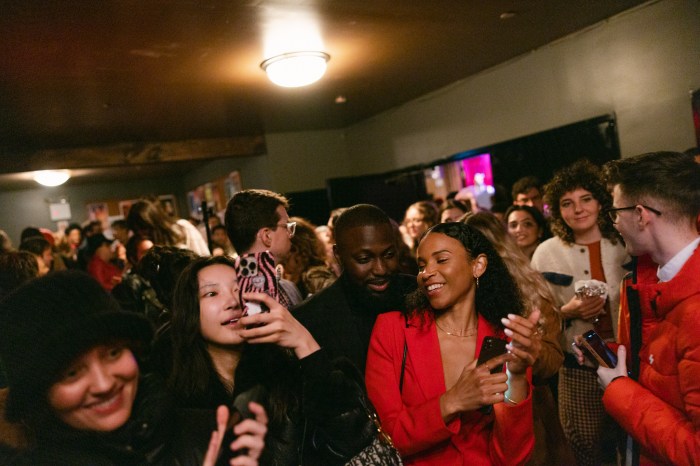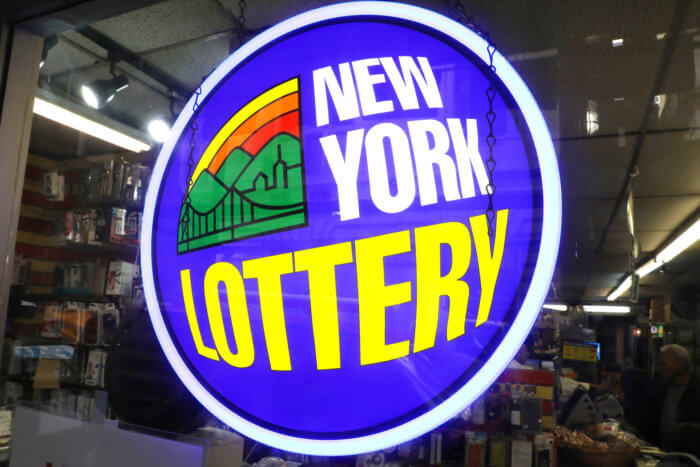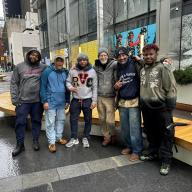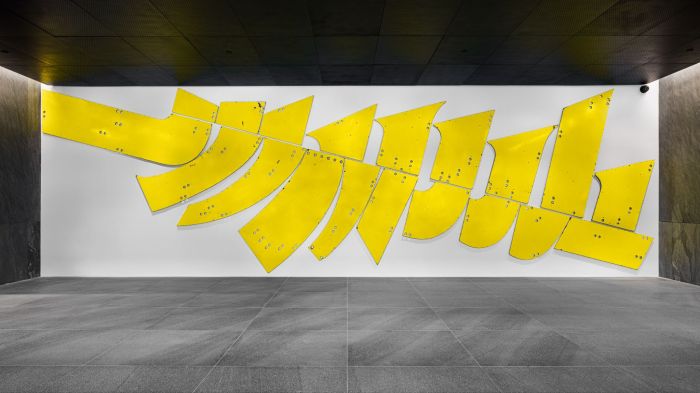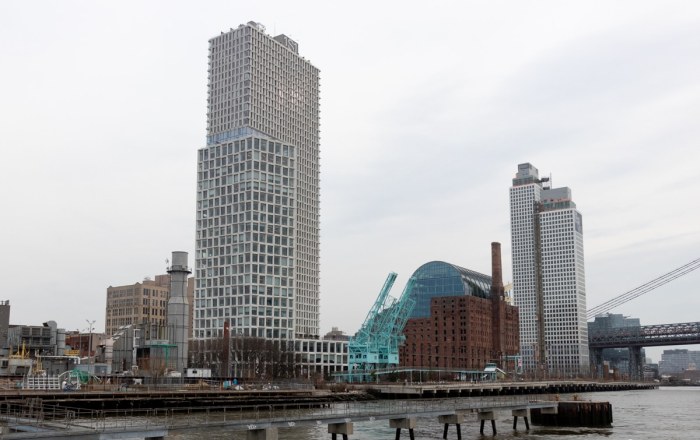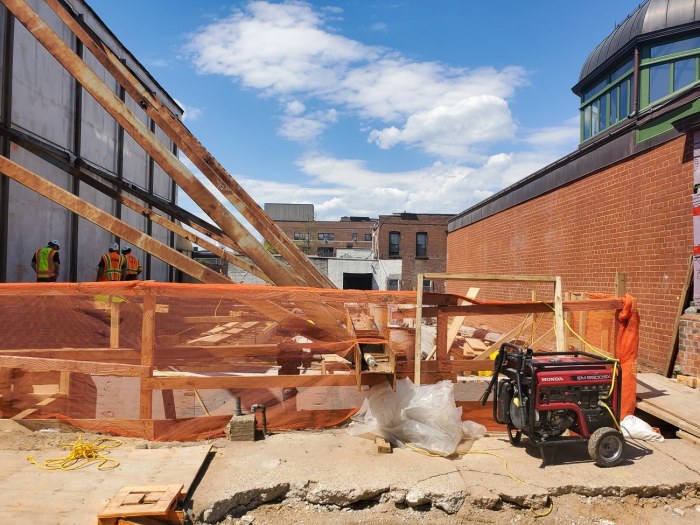A cadre of local elected officials broke ground on what will be Brooklyn’s largest eco-friendly residential development to date — but the solar panels that were to be the building’s crowning feature had to be scrapped because they would never get light once the Atlantic Yards project is completed across the street.
“We were going to have solar panels, but the shadows from Atlantic Yards would make solar power basically irrelevant,” said Michelle de la Uz, the executive director of the Fifth Avenue Committee, the non-profit group that broke ground on the Fort Greene affordable housing on Monday.
“[Atlantic Yards] pretty much eclipses significant portions of the building in all four seasons,” added de la Uz.
The 10-story, 80-unit building, on top of an old brownfield that was once home to a gas station, will be Brooklyn’s greenest housing, with ground-floor retail and underground parking.
But its location, on Atlantic Avenue between South Oxford Street and South Portland Avenue, presented an unexpected obstacle.
As The Brooklyn Paper reported in February, a Pratt Institute analysis revealed that the 16 skyscrapers of the Atlantic Yards project would cast shadows over large portions of Fort Greene and Prospect Heights during much of the year, particularly during the winter, when the northern hemisphere tilts away from the sun.
“Shadows from September to March will be severe,” Brent Porter, the Pratt professor who authored the study, said at the time. “Once those buildings go up, the shadowing will be forever.”
The building’s designers compensated with other green innovations, like a system that will reuse wastewater for irrigation, energy-efficient appliances, and recycled building materials.
The building is to be completed in about two years. Its 40 affordable co-ops will range in price from $83,500 for a one-bedroom to $344,500 for a three-bedroom. Another 19 of the units will be targeted toward middle-income New Yorkers who can make up to about $124,075 for a family of four. Most of the tenants will come from within the community board, de la Uz said.


